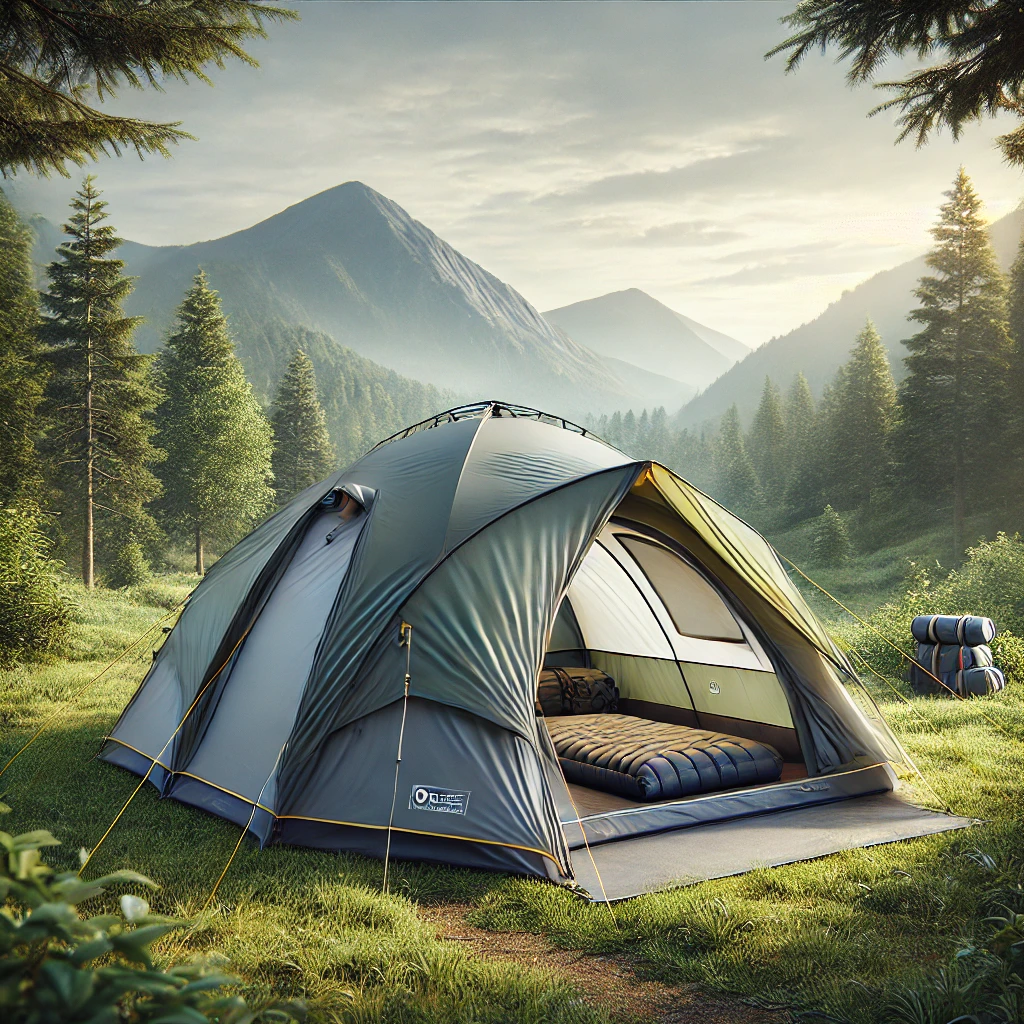Choosing the right tent is crucial, especially when camping in varying weather conditions. To help you decide between Naturehike and Decathlon, we conducted a rigorous head-to-head challenge, pushing each tent to its limits across various outdoor scenarios. Our tests included a mix of technical measurements, real-world observations, and firsthand feedback. Here’s our detailed breakdown of how each tent performed.
Scenario 1: Rainy Setup Challenge
Objective: Test the setup process in the rain, focusing on speed, ease, and initial water resistance.
Technical Data:
- Setup Time: Naturehike – 7 minutes 30 seconds | Decathlon – 3 minutes 45 seconds
- Waterproof Rating: Naturehike – 4000mm Hydrostatic Head | Decathlon – 2000mm Hydrostatic Head
- Fabric Details: Naturehike – 20D silicone-coated nylon | Decathlon – Polyester with PU coating
Observations:
- Naturehike: The higher waterproof rating (4000mm vs. 2000mm) gave Naturehike a clear advantage in resisting water during setup. The 20D silicone-coated nylon fabric felt durable and was less prone to water penetration during the initial setup phase. The setup time was slightly longer, but it offered better protection against rain seeping in during assembly.
- Decathlon: Despite the faster setup time, Decathlon’s lower hydrostatic head (2000mm) showed its limitations, with water beginning to seep near the seams during prolonged rain exposure. The polyester fabric was quick to set up, but we noticed some pooling along the floor edges, requiring additional adjustments to maintain dryness.
Real-World Comparison: While Decathlon’s tent is quicker to set up, Naturehike’s superior waterproofing makes it a better choice for frequent rainy conditions.
Winner: Naturehike for superior waterproof performance, despite taking longer to set up.
Scenario 2: Wind Resistance Test
Objective: Evaluate each tent’s ability to withstand strong winds, focusing on stability and noise levels.
Technical Data:
- Wind Speed Tolerance: Naturehike – Up to 40 mph | Decathlon – Up to 30 mph
- Pole Material: Naturehike – 7001 aluminum alloy poles | Decathlon – Fiberglass poles
- Noise Decibels Inside Tent During Gusts: Naturehike – 30 dB | Decathlon – 45 dB
Observations:
- Naturehike: The 7001 aluminum alloy poles offered superior flexibility and resilience, bending but not breaking under gusts up to 40 mph. The tent’s lower noise level (30 dB) inside was a notable comfort factor, reducing sleep disruption during high winds. The taut, aerodynamic design allowed wind to flow over the tent rather than directly against it.
- Decathlon: Fiberglass poles, while sufficient for mild conditions, began to flex uncomfortably at wind speeds above 25 mph. Noise levels inside reached 45 dB, making the tent feel less stable and noisier, which could be distracting during high winds. The tent’s design caused more flapping, which added to the perceived instability.
Real-World Comparison: Naturehike’s advanced pole materials and quieter, sturdier design make it the clear choice for windy conditions.
Winner: Naturehike for better wind tolerance and quieter, more stable performance.
Scenario 3: Overnight Comfort in Varied Temperatures
Objective: Assess comfort in both cold and warm temperatures, focusing on ventilation, condensation control, and overall sleep quality.
Technical Data:
- Ventilation Points: Naturehike – 3 (2 roof vents, 1 mesh door) | Decathlon – 5 (2 mesh doors, 2 roof vents, 1 floor vent)
- Internal vs. External Temperature Difference: Naturehike – +5°F | Decathlon – +3°F
- Condensation Levels: Naturehike – Low (minimal drips) | Decathlon – Moderate (noticeable moisture)
Observations:
- Naturehike: The tent maintained a consistent +5°F above external temperatures, ideal for cooler nights. Its minimal condensation levels ensured a dry interior, even in cold weather. Ventilation was effective but could feel slightly restrictive on warmer nights, leading to a bit of stuffiness.
- Decathlon: Decathlon’s extensive ventilation system excelled in warm conditions, keeping the tent cool and comfortable. However, on colder nights, the extra ventilation led to a noticeable drop in internal temperature and increased condensation, making the tent feel damp by morning.
Real-World Comparison: Naturehike provides a warmer, drier environment, ideal for cold and damp conditions, whereas Decathlon offers superior airflow, making it a better fit for hot climates.
Winner: Decathlon for warm weather comfort, but Naturehike is preferred in colder, wetter conditions.
Scenario 4: Quick Pack-Up in Morning Dew
Objective: Measure ease of packing up the tent when wet, focusing on handling wet fabrics and overall portability.
Technical Data:
- Pack-Up Time: Naturehike – 6 minutes | Decathlon – 4 minutes
- Packed Size: Naturehike – 18″ x 6″ | Decathlon – 20″ x 8″
- Drying Time (Post-Pack): Naturehike – 1 hour | Decathlon – 1.5 hours
Observations:
- Naturehike: The compact 18″ x 6″ packed size made Naturehike easy to handle, even when damp. The lightweight fabric dried quickly, making it a practical option for multi-day hikes where swift transitions between campsites are essential.
- Decathlon: While Decathlon’s tent packed up faster, its slightly bulkier size (20″ x 8″) and longer drying time made it less convenient for quick morning departures. The polyester fabric, although durable, retained moisture slightly longer, which could be an inconvenience during wet seasons.
Real-World Comparison: Naturehike’s more compact packed size and faster drying time make it ideal for frequent campers who value portability and quick transitions.
Winner: Naturehike for ease of packing and faster drying, though Decathlon is commendable for speed.
Overall Winner: Naturehike vs. Decathlon Tents
Final Thoughts:
- Choose Naturehike if you need a tent that excels in durability, wind resistance, and colder, wetter environments. Its superior materials, robust design, and quick drying make it a great choice for frequent campers and harsher conditions.
- Opt for Decathlon if you’re looking for a budget-friendly tent that’s incredibly easy to set up and well-suited for warm weather camping. Its ventilation system and quick assembly are perfect for casual, fair-weather camping trips.
Both brands bring distinct strengths to the table, and your choice should align with your camping style and expected conditions. Whether you’re braving a stormy mountaintop or enjoying a summer weekend at the lake, these tests provide a clear picture of what each tent can handle.
